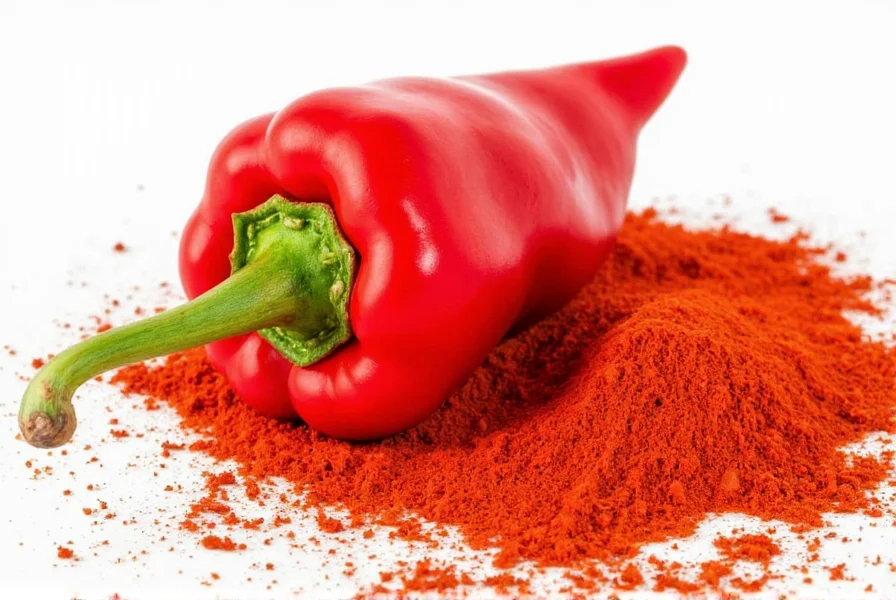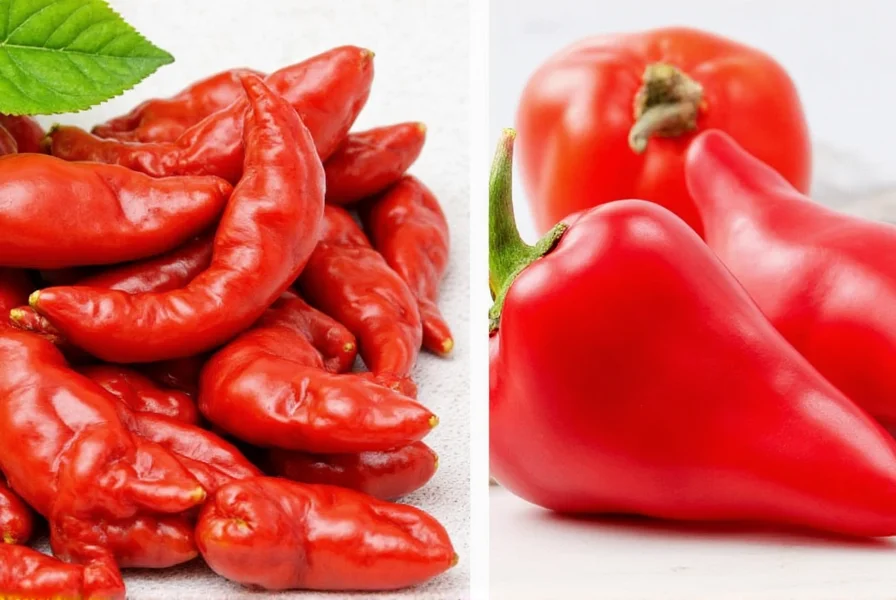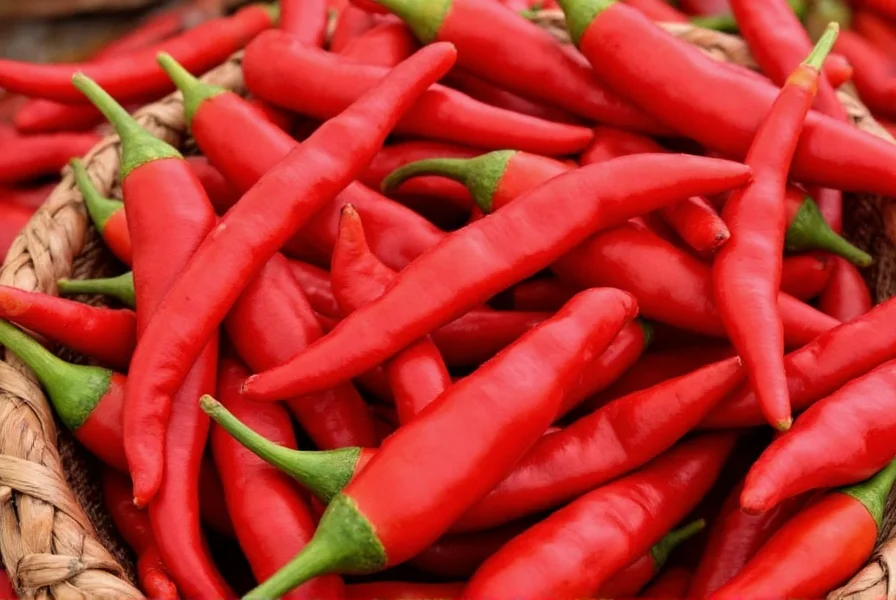When exploring the difference between cayenne pepper and red pepper, many home cooks and culinary enthusiasts find themselves confused by these similar-sounding ingredients. Understanding their distinctions is crucial for achieving the right flavor and heat in your recipes.
What Exactly Is Cayenne Pepper?
Cayenne pepper comes from specific varieties of Capsicum annuum chili peppers that originated in French Guiana. When dried and ground, these slender, pointed red peppers become the bright red powder known as cayenne pepper. Pure cayenne pepper consists solely of ground cayenne chili peppers without additional ingredients.
On the Scoville scale, which measures chili pepper heat, cayenne typically ranges from 30,000 to 50,000 units—significantly hotter than many common peppers but milder than habaneros or ghost peppers. Its flavor profile features a clean, sharp heat with subtle fruity and earthy notes.

Understanding “Red Pepper” Terminology
The term “red pepper” creates confusion because it's not scientifically precise. In culinary contexts, “red pepper” usually refers to “crushed red pepper” or “red pepper flakes,” which are a blend of various dried, crushed chili peppers. This mixture commonly includes cayenne but also incorporates other peppers like:
- Ancho peppers (mild, sweet)
- Bell peppers (no heat)
- Jalapeños (moderate heat)
- Serranos (hot)
This blend creates a more complex flavor profile with varying heat levels compared to pure cayenne. The specific composition differs by brand, which explains why crushed red pepper can taste different depending on where you purchase it.
| Characteristic | Cayenne Pepper | Crushed Red Pepper |
|---|---|---|
| Composition | 100% ground cayenne peppers | Mixture of various dried chili peppers |
| Heat Level (Scoville) | 30,000-50,000 units | Variable (1,000-30,000 units) |
| Texture | Fine, uniform powder | Coarse flakes with visible seeds |
| Flavor Profile | Sharp, clean heat with earthy notes | Complex, variable heat with multiple pepper flavors |
| Common Uses | Curries, sauces, spice blends | Pizza, pasta, Mediterranean dishes |
Can You Substitute One for the Other?
Understanding whether you can substitute cayenne pepper for red pepper (or vice versa) depends on your recipe and desired outcome. When considering can I substitute cayenne for red pepper, keep these factors in mind:
If substituting cayenne for crushed red pepper, use approximately 1/4 to 1/2 teaspoon of cayenne for every 1 teaspoon of red pepper flakes. This accounts for cayenne's more intense heat. The substitution works best in recipes where you want consistent, straightforward heat rather than the complex flavor of multiple peppers.
Conversely, when replacing cayenne with crushed red pepper, you'll need more volume to achieve similar heat levels, but the flavor profile will differ. This substitution works reasonably well in dishes where the nuanced pepper blend complements other ingredients, like Italian or Mediterranean cuisine.
Common Misconceptions About Cayenne and Red Pepper
Several misconceptions persist about these ingredients. Many people assume that red pepper flakes are just crushed cayenne peppers, but this isn't accurate. While cayenne often appears in red pepper blends, the mixture contains multiple pepper varieties.
Another common confusion involves paprika, which is sometimes mistakenly called “red pepper.” Paprika comes from different pepper varieties and ranges from sweet to hot, but it's distinct from both cayenne and crushed red pepper.
Practical Tips for Cooking With Each
When working with cayenne pepper, remember that a little goes a long way. Its fine texture distributes evenly through dishes, making it ideal for:
- Spice rubs for meats
- Curry powders and blends
- Soups and stews requiring consistent heat
- Hot sauces where uniform heat is desired
Crushed red pepper shines in applications where texture and variable heat matter:
- As a finishing spice on pizza or pasta
- In olive oil for dipping bread
- On roasted vegetables for visual appeal
- In dishes where you want pockets of varying heat intensity

Storage Recommendations
Both spices lose potency over time, but proper storage extends their shelf life. Keep cayenne pepper and crushed red pepper in airtight containers away from light, heat, and moisture. Whole dried peppers maintain freshness longer than ground versions. For optimal flavor, replace ground spices every 6-12 months and whole dried peppers every 1-2 years.
Understanding Regional Terminology Differences
The confusion between cayenne pepper and red pepper is compounded by regional naming differences. In some areas, “red pepper” might specifically refer to cayenne, while in others it means the flake mixture. When following recipes from different sources, check whether they specify “cayenne pepper,” “crushed red pepper,” or simply “red pepper” to avoid unexpected heat levels in your dishes.
Frequently Asked Questions
Is cayenne pepper the same as red pepper flakes?
No, cayenne pepper is a specific type of ground chili pepper, while red pepper flakes are a mixture of various dried, crushed chili peppers that may include cayenne but also other varieties like bell peppers and jalapeños.
Can I substitute cayenne for red pepper in recipes?
Yes, but with caution. Use about 1/4 to 1/2 teaspoon of cayenne for every 1 teaspoon of red pepper flakes, as cayenne is significantly hotter. The flavor profile will differ since red pepper flakes contain multiple pepper varieties.
Which is hotter: cayenne pepper or red pepper flakes?
Pure cayenne pepper is typically hotter than crushed red pepper flakes. Cayenne measures 30,000-50,000 on the Scoville scale, while red pepper flakes vary but generally range from 1,000-30,000 units depending on the specific blend.
Why do some recipes call for red pepper and others for cayenne?
Recipes specify based on desired heat level and flavor profile. Cayenne provides consistent, straightforward heat, while red pepper flakes offer variable heat intensity and more complex flavor from multiple pepper varieties. Regional terminology differences also contribute to the variation.
Does red pepper contain cayenne?
Most commercial crushed red pepper blends do contain cayenne pepper along with other chili varieties, but the exact composition varies by brand. Some premium blends might specify their ingredients, while generic versions typically don't disclose the specific pepper mix.











 浙公网安备
33010002000092号
浙公网安备
33010002000092号 浙B2-20120091-4
浙B2-20120091-4